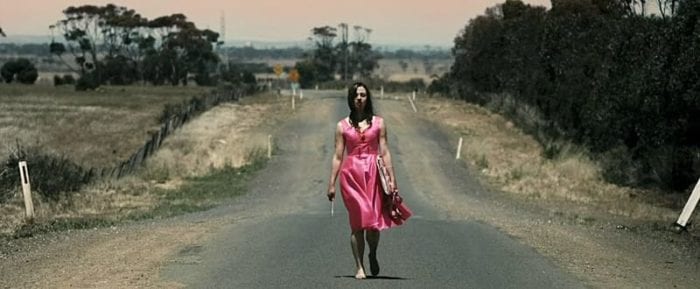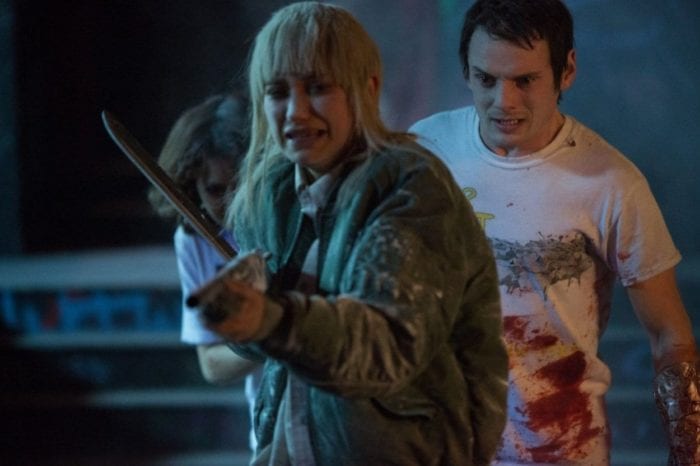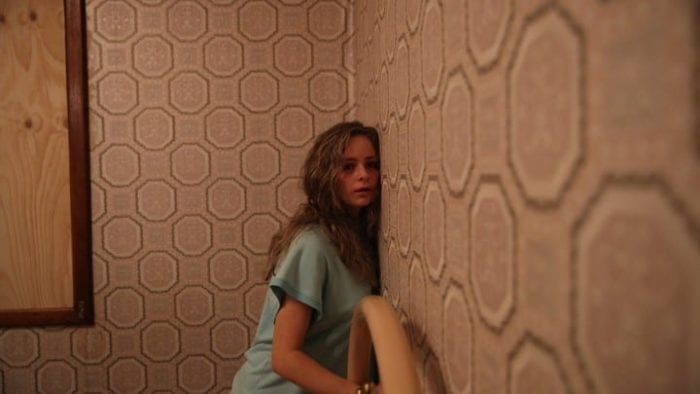There’s a very, very fine line between exploitation and dark fiction. The former uses awful circumstances to entertain, with little in the way of subtext or themes. Its purpose is to be as nasty as possible, and the worst offenders will go just about anywhere to make the audience feel… dirty. Uncomfortable. Perversely entertained. The latter is the flip side of that same coin. Stories that fall in the dark fiction category often have the same type of content as straight exploitation flicks. Vile murder, sexual assault, villains you can’t wait to see die. But instead of using these awful events to purely entertain, they are used to explore the worst elements of humanity. It’s the difference between Saw and Jack Ketchum’s The Girl Next Door. Let’s dive in with three movies that could fall into either category and, more often than not, fall into both. These are movies that are too well made to be pure exploitation flicks, but so grimy that they can feel like one. These are three movies I like to refer to as “classy exploitation.”
Suffice it to say, we will be discussing full spoilers for all three of these films. Each of them are worth seeing if you have a strong stomach.
The Loved Ones (2009, dir. Sean Byrne)

Trigger warning: This section contains discussion of self-harm and sexual assault.
In this heavy metal teen horror film, Brent, who was in a car accident that killed his father, is asked to the school prom by Lola Stone and he turns her down. It turns out, though, that Lola is thoroughly psychotic and has her father wrapped around her finger; the pair kidnap Brent, inject bleach into his vocal cords so he can’t speak or talk, and subject him to torture and terror that is almost unimaginable. Add in some basement-dwelling ghouls (actually, victims of Lola from the past) and a total “fuck you” soundtrack and you have a recipe for what should be a schlocky piece of trashy entertainment.
Here’s the thing: everything about this movie is far too well made for it to be dismissed so readily. The acting is extremely naturalistic with believable, grounded performances. The cinematography lingers on trauma in a way that feels genuinely scary and painful, not to titillate or amuse. It builds up everything so effectively that, when Brent breaks free of his shackles and stabs dear old Dad in the throat while the heavy metal soundtrack blasts, I shot up in my seat, hands on my head, jaw open in disbelief at how tense it was and how effectively it was paid off. It feels like you’re there, suffering right along with Brent, and it makes you root for him and makes the catharsis of the third act that much sweeter.
But let’s backtrack to the inciting incident that opens the movie. Brent isn’t paying attention to the road, and why should he? He and his dad are on a back road that isn’t even paved. When he brings his attention back, he thinks he sees someone and veers into a tree to avoid hitting them. He then suffers from a pang of severe guilt that causes him to cut himself with a razor blade he wears around his neck. His relationship with his girlfriend Holly becomes strained, with her trying to remain supportive but feeling unable to help. And, in a fantastic twist, Byrne makes Mia, the sister of one of many missing boys, a central character.
On prom night, Mia goes out with Brent’s friend to prom, which seems an odd choice since she’s the school heartthrob and he… isn’t. But it becomes clear as the film goes on that she is not in a good mental space at all. She drinks herself to oblivion, smokes pot, and gets extremely grabby with Brent’s friend at the prom, eventually sleeping with him while under the influence of God knows what (which also paints Brent’s friend in a less than ideal light, considering he remains more or less sober through everything).
The movie uses Brent and Mia’s stories to explore grief and self-hatred from two very different perspectives. The primary storyline is Brent’s, and all the gore and horror is used as a metaphor for him coming to terms with what happened and forgiving himself for his father’s death. This is made no clearer than in the climactic scene, when he’s driving away and almost hits Holly with his car but veers off the road and instead hits Lola head-on (and it should be said, her death is so, so satisfying thanks in no small part to Robin McLeavy’s outstanding performance). The specter of the man he almost hit, who turns out to be one of Lola’s victims, haunts him until he has to fight his way out of a pit of her victims and climb their bodies to the outside world (did I mention this movie is messed up and also metal as hell?).
Mia’s story, meanwhile, takes a sadly much more realistic approach, with her exhibiting self-destructive behavior. Brent’s story is resolved by the end, and he still bears physical scars of his ordeal, as well as mental ones. Mia’s scars are all psychological, and by the end, it’s unclear if she and her family know what happened to their brother and son. It’s a bittersweet ending to the nasty story and has more depth than your average exploitation film would.
Sean Byrne would similarly take classic horror tropes on in his equally great 2017 film The Devil’s Candy, which is a haunted house story like no other you’ve ever seen. He is a director to watch.
Green Room (2015, dir. Jeremy Saulnier)

A bunch of punks who live solely off of live shows go to do an interview for a kid for his college newspaper. Before they leave, they mention they are starving for gigs, and he lets them know that his cousin owns a bar they can play at. Said bar is in the middle of nowhere along a road made of mud, and it turns out it’s a popular hangout for neo-Nazis and other white supremacist types. When they witness a murder, a nail-bitingly intense game of cat and mouse plays out, with the punk band fighting for survival against the worst of humanity.
Rather than diving right into the bloodshed with some kind of opening stinger, director Saulnier instead lets the viewer spend time with the band The Ain’t Rights and they ain’t exactly great people. When we first meet them, they’re going through a cornfield to siphon some gas for their van. To say that they’re kind of pathetic is something of an understatement. But they also feel pathetic in a way that feels genuine and real. They feel like a real group of people.
The real miracle is that the Nazis feel the same. This arguably makes them more terrifying than if Patrick Stewart had been a scenery-chewing, scene-stealing bad guy and they were merely his minions. Instead, it all feels subdued, like, despite the fact that they’re white supremacists and militarists, they’re just regular people. They make a whole bunch of mistakes throughout the movie, as do The Ain’t Rights, and the results are often brutal and hard to watch.
This feeling of plausibility and realism lends the movie a more thoughtful air than if it had been punks breaking guitars over Nazi heads for 90 minutes (although that also would have been entertaining). Showing the Nazis as regular people gives you an insight into how they think. The reason they murder Emily early on is that she was going to run away with one of the other Nazis, who is given a second chance to prove his worth to the cause. It’s a bizarre, hyper-masculine way of thinking. It shows their group mentality, their Us vs. Them idea of how the world works. They are so vicious and awful because people shun them, and people shun them because they are so vicious and awful.
The movie becomes, in essence, a form of rebellion against a hateful ideology that is sadly still thriving today. It’s intense, brutal, and often hard to watch, with violence that pulls absolutely no punches. But it ends with the protagonists winning, Patrick Stewart’s chillingly scary Darcy dead, and the sole survivor of The Ain’t Rights (played to great effect by the sadly departed Anton Yelchin) and the insider who helped them (played by a great Imogen Poots). It suggests that, when push comes to shove, you can’t be afraid to stand up to people like the neo-Nazis portrayed in the movie, because their hateful ideology will give you no quarter. It’s a chilling message because of how much it applies to the world today. But it also elevates what could have been a straightforward gorefest into something much more thoughtful.
The Hounds of Love (dir. Ben Young, 2017)

Trigger warning: This section contains discussion of kidnapping, rape, and abusive relationships.
To say that this movie is disturbing is an understatement. Even more so than the other two movies on this list, it’s arguable that this is less a horror movie and more a really dark drama. But when the subject matter is so unrelentingly awful, I think it’s a safe bet to call it a horror film.
Vicki is walking home one night when she’s picked up by a couple, Evelyn and John. They seem friendly enough until they chloroform her and bring her back to their home, a typical suburb that could be anywhere in the world. John becomes obsessed with Vicki, doing awful things to her and sexually assaulting and raping her on more than one occasion (mercifully, this is off-screen but no less disturbing for it). As time goes on, Vicki soon learns the truth—John is a master gas lighter and has borderline brainwashed Evelyn into helping him carry out his sick fantasies, and she eventually makes a connection with her that leads to Evelyn finally killing John and Vicki escaping.
The subtext here should be clear—it’s about abusive relationships and how people can be manipulated into believing one thing if enough time passes. Evelyn was clearly lured in by John’s charms early in their relationship—there are numerous scenes showing him being what can only be described as a nice guy. But he reveals his true self on numerous occasions: a hateful, insecure man who will commit horrible acts of violence to get what he wants. In one of the most upsetting scenes in the movie, he kicks Evelyn’s dog to death in their kitchen because it shits on the floor.
Most of the violence and trauma are off-screen, thankfully. But that really serves to enhance the effect of everything that happens. After all, nothing is scarier than the power of suggestion, and The Hounds of Love knows that not showing things lets us fill in the blanks in a worse way than can ever be shown on screen. The movie forces you to put yourself in Vicki’s dire situation by making you imagine what is done to her by her captors.
Like the best horror, this is a relatable, everyday problem taken to its most horrific extreme. I myself have been in bad relationships before, and I’m sure many other people reading this have been as well. It’s simply a fact of life for most people. Oftentimes, bad relationships involve manipulation, gaslighting, coercion, and guilt-tripping to get the desired result out of the other party. Hounds of Love shows how a true parasitic influence on someone can get out of control in the worst possible way and acts as a cautionary tale against out of control masculinity.
Of the three films on this list, this is undoubtedly the most difficult to watch. The other two have schlocky elements and setups executed in a hyperrealistic way, which is what makes them so good. This movie, though, is pure realism the whole way through, and there is no monster scarier than people.
More so than ever before, filmmakers are taking concepts that sound like pure exploitation on paper and putting a unique spin on them to turn them into something that feels dark, real, and true to life, no matter how ridiculous their concepts get. These are just three modern examples of movies that take old exploitation concepts and turn them into something with a real message beyond “humanity is terrible.” When done right, exploitation can become something truly terrifying because it reflects the worst in our species. It’s a fine line to walk, and difficult to pull off well, but when done right, these kinds of stories are challenging and intense in the best possible ways.


